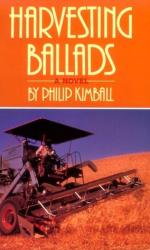|
This section contains 175 words (approx. 1 page at 300 words per page) |

|
Kimball has confessed to several additional literary models, including James Joyce.
Joyce used the stream of consciousness technique most successfully in his works Ulysses and Finnegan's Wake. He has also acknowledged Thomas Pynchon's V (1963) as an important example of nonlinear narration, of disparate stories which the reader believes must all fit together somehow. Ken Kesey's Sometimes A Great Notion (1964) and Joseph Heller's Catch 22 (1964) "should be mentioned with their tangled and various plotlines," Kimball wrote (private e-mail, 11/6/00). He continued, "Then there's German poetry in general and Rilke in particular—a great influence on my intensity of observation (to the extent that such is apparent in my work—the texts are chockfull of snatches of Rilke, Hoffmannsthal, Eichendorf, Gottfried Benn, etc)." When Harvesting Ballads was first published in 1984, Kimball refused to acknowledge the Tristan and Isolde legend as an important source, waiting to see if his...
|
This section contains 175 words (approx. 1 page at 300 words per page) |

|




